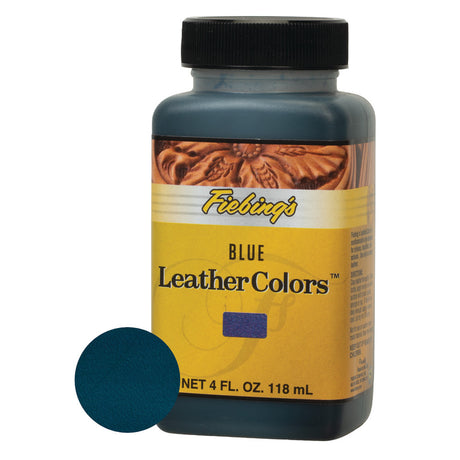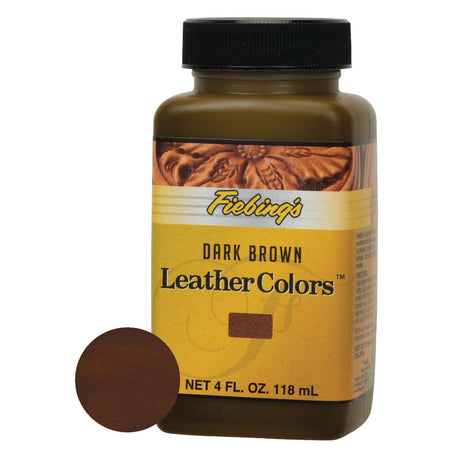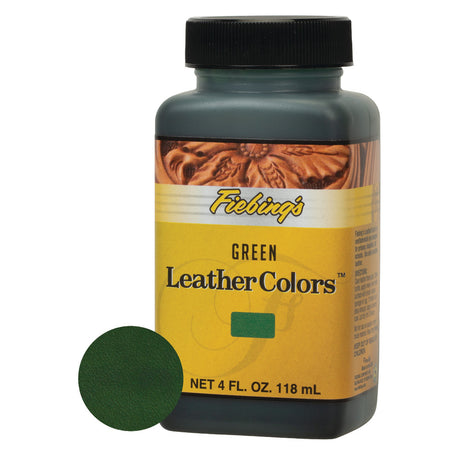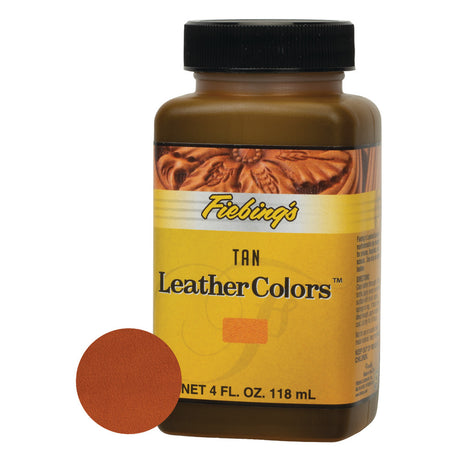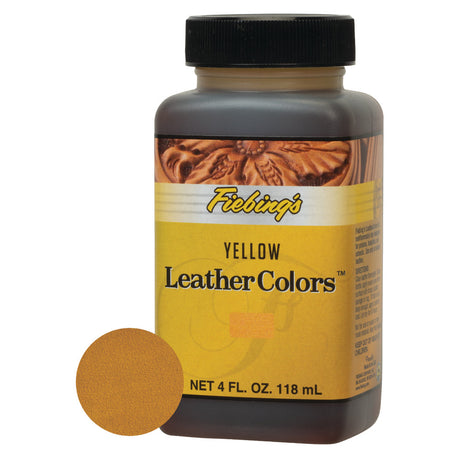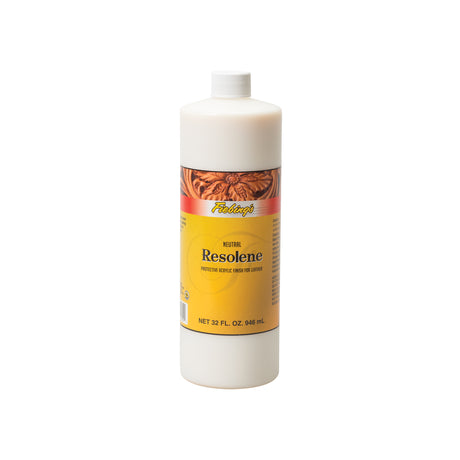How to Dye Vegetable Tanned Leather
A Beginner's Guide On How To Dye Vegetable Tanned Leather

Nothing quite compares to the unparalleled finish of professionally worked, high-quality veg-tanned leather. You know exactly what we mean!
So, you're here because you're on a quest to learn how to dye veg tan leather like a pro, right?
Before you officially achieve “pro status” in the leather world, you'll need to understand the basics of veg tan leather and how it's different from other leather types.
Veg-tanned leather is a type of full-grain leather made exclusively with vegetable-based tanning agents like bark extracts and oils.
This natural method creates an incredibly strong material that develops its own unique patina with age, making veg tan leather perfect for creating pieces that last.
In addition, veg-tanned leather can also be more easily dyed than chrome-tanned or synthetic materials because its dense pores will readily absorb dyes and finishes.
Speaking of dyes, which one is on your radar... water-based Leathercolors™ or alcohol-based ProDye from Fiebing's?
Fiebing's Leathercolors™ vs Fiebing's ProDye:
Which One Is The Best Dye For Leather
Why even kick off your dyeing journey without knowing what the best dye for leather is?
Fortunately, we caught you before you accidentally fell into the common pitfalls most beginner leather workers find themselves in.
Let's talk about the differences between Fiebing's Leathercolors™ and ProDye. Both are great dyes and have their distinct pros and cons.
The water-based Fiebing's Leathercolors™ is ideal for veg-tanned leather as it will not alter the original color of veg-tan hides, often offering a more natural-looking finish than ProDye does. Though, the downside is that this type of dye tends to be less vibrant or consistent in comparison to its counterpart.
Whereas alcohol-based ProDye offers a brighter, bolder color with unparalleled clarity and saturation, allowing for excellent wicking into veg-tanned leather because of its liquid form. The downside here? The alcohol in ProDye can alter veg tan leather's natural patina and color.
Ultimately, the choice is yours! If you're looking for vibrant colors with excellent clarity and saturation, then ProDye would be your ideal pick.
On the other hand, if you value preserving veg-tanned leather's original properties more than anything else, then Fiebing's Leathercolors™ would be your best bet for achieving a subtle yet beautiful finish.
No matter which option you go with, it all boils down to personal preference so pick which one speaks to you!
Top 6 ways to dye Leather
Now that you've chosen your dye, the real fun begins! There are several different ways to dye veg-tanned leather, but here we will focus on six popular techniques.
Dip dyeing:

This is an easy way to get an all-over coverage with uniform color and requires minimal equipment (all you need is a bowl of dye and some veg-tanned leather). To achieve even coverage, simply dip veg tan leather into the dye solution and allow it to dry.
Wool daubers:

If you're looking for more controlled coverage, then this method works great! Simply wipe a dye- or paint-soaked wool dauber onto veg-tanned leather and allow it to dry.
Sponge:

This method is great for veg-tanned leather projects as you can use a damp sponge to apply the dye to a large area with precision and accuracy.
Paintbrush:

If you're keen on creating intricate details and shades then this is the way to go! Using veg-tan leather, mix some dye with water in a bowl, dip the paintbrush into the solution, and brush the dye onto the veg-tanned leather.
Block Dyeing:

For those of you who are looking to achieve all-over coverage while retaining natural blemishes and character marks, block dyeing veg-tanned leather would be perfect! All you need is a flat block of wood with two layers of cotton, such as t-shirt cloth, stretched over it. Simply dip your block, wipe the excess dye off using the edge of your container, and evenly wipe across your leather workpiece.
Airbrushing:

Last but not least - you can airbrush veg-tanned leather! If you're looking for a quick way to achieve even coverage with vivid color then this is your ideal option! This method also allows for intricate color blending and gradients.
No matter which method you choose, veg-tanned leather can be dyed in various colors and shades - the only thing that matters is how much creativity and imagination you put into it! Have fun experimenting and creating something truly unique! Let's get dyeing!
Not sure what veg-tan leather to get started with for your hand dyed items?
Premium quality single shoulders from one of our most trusted tanneries are a cost-effective option and they are perfect for any type of project!
Available in a variety of weights to meet your needs!
Hand Dyeing Leather: The Finishing Touch
Once you're done dyeing veg-tanned leather, it's important to seal and protect the surface.
Oil-based dyes provide more even coverage with little to no rub-off, which makes them ideal for veg-tanned leather projects as they can be sealed easily with a top coat of your choice (clear acrylic or shellac).
This will give it a glossy finish and help maintain the vibrancy of the color over time.
Let's backtrack for one second here. What's "rub off" and why is it no good for your veg-tanned leather experience?
How To Prevent Dye Rub Off
Rub off (or “bleeding”) occurs when the dye bleeds from veg-tanned leather into adjacent materials, creating an uneven or faded appearance. To prevent this, it is best to use a basic alcohol-based dye such as Fiebing's ProDye that will not rub off.
Go heavy across the edges and on the skived side of the leather with the top coat. Then, go sparingly on the non-skived side.
To further protect veg-tanned leather from potential staining and fading, it is recommended to apply a light coat of neatsfoot oil to the surface before dyeing. This will not only aid in even coverage but also help keep stain and color bleed at bay.
Additionally, applying a top coat after dyeing veg-tanned leather can help increase the lifespan of your project and create a subtle yet beautiful finish.
We're talking about the finish so you know you're almost at the end; only a little more information and you're done! You know what kind of dye to use and how to apply it, but when is the best "time" to apply your leather dye?
The Best Time To Apply Leather Dye

"Do I apply leather dye before or after I stamp/carve?"
That's the question of the hour!
The answer is that the best time to apply leather dye is after you stamp/carve. This will ensure even coverage and prevent you from pushing the stamp through the dye, resulting in a naked edge of veg-tanned leather.
The last three steps when working with veg-tanned leather are always “dye, top coat, and assemble;” so do everything else before dyeing!
Once your veg-tanned leather has been dyed, sealed, and protected by a top coat - congratulations! You've reached the finish line. Now it's time to admire your beautiful work and show off your unique veg-tanned leather creation!
Now that you know the basics of veg-tanned leather dyeing, it's time to get ready and grab those supplies. Don't forget: whether you choose Fiebing's Leathercolors™ or ProDye, with a little practice and patience you can achieve some impressive results. Now, go forth with confidence and express your creativity with veg-tanned leather!
Looking for inspiration for your leathercraft project? Check out our Shop by Project page for some of our favorites!

























